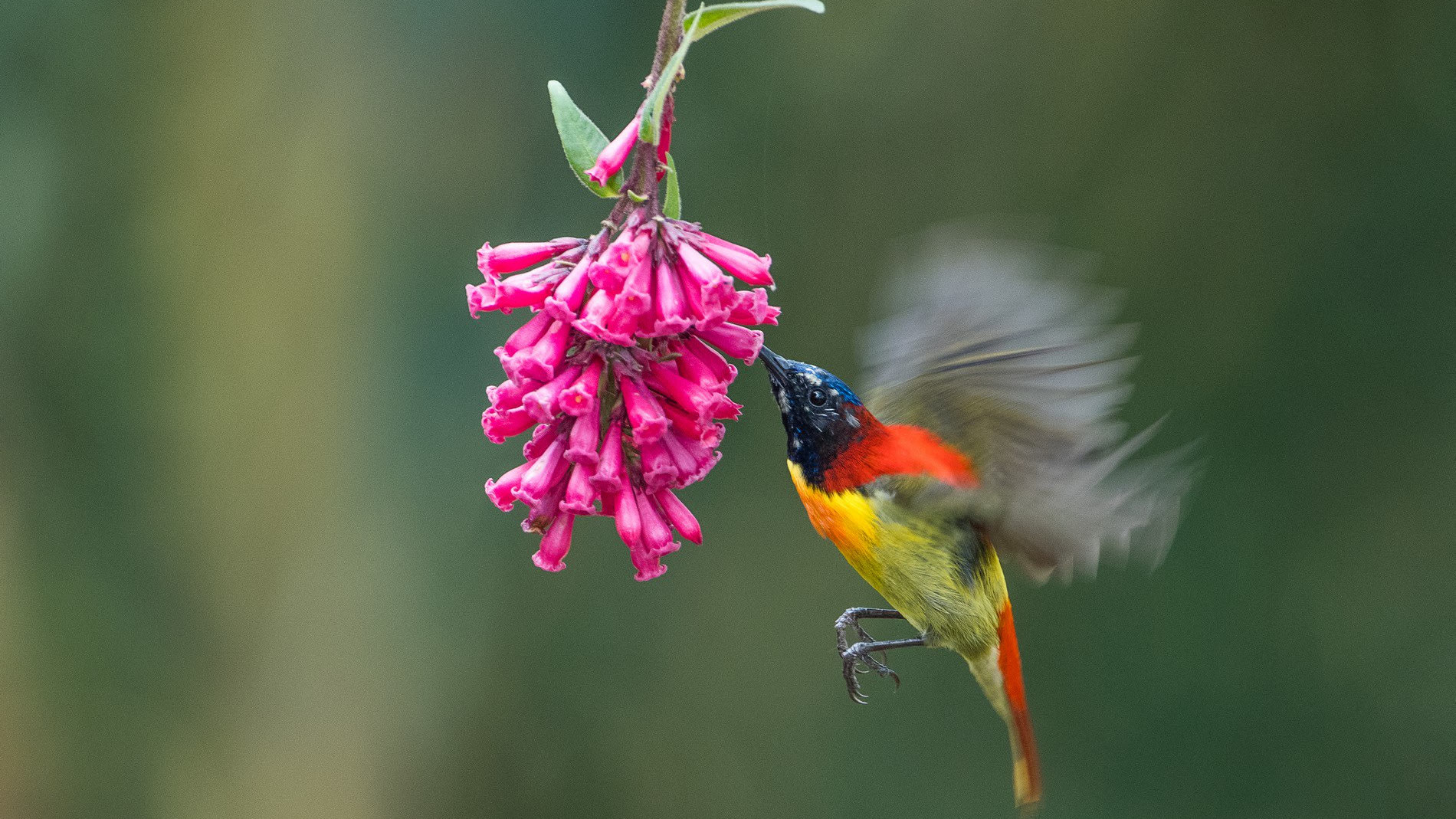 Listen to this article
•
15:34 min
Listen to this article
•
15:34 min
Pollination is a good metaphor for love and sex. Flowers have been a symbol of romance for ages, and in old movies — when amorous displays were considered risqué — love scenes were portrayed through trembling flowers and buzzing bees dusted with pollen. This imagery, like the phrase “birds and the bees”, is more apt than we realise. Like sex, pollination is fundamental for our survival. The transfer of pollen to the stigma of a flower is necessary for forming fruits — and for our food security. Pollinating bird species and the flowering plants they pollinate have shaped each other as they evolved over millennia, with a relationship lasting aeons.
The importance of pollination — and pollinators — is well-acknowledged for ecological and food security. About 60 species of birds are involved in pollinating 90+ flowering plants in India. Pollination first evolved around 125 million years ago with the arrival of flowering plants (or angiosperms). Pollination by animals originated between 65 to 99 million years ago and led to a rapid diversification and coevolution of flowering plants and their pollinators. Most animal-mediated pollination is by insects. There is a dearth of studies on ornithophily (pollination by birds), and the role of birds in pollination is likely underestimated, particularly in the tropics.
Relying solely on birds for pollination is a somewhat risky strategy for plants and usually takes place in habitats where insect pollinators are fewer — like high altitudes, arid regions, or isolated islands. Pollinating birds are attracted to flowers to feed on the nectar, incidentally coating themselves in pollen, thus helping to transfer it as they travel from flower to flower. Hummingbirds like the sword-billed hummingbird (Ensifera ensifera) of South America, with a bill to match the long tubular flowers of a specific species of passionflower plant, are evidence of the long and faithful coevolutionary relationship between these organisms.
Cover photo: A fire-tailed sunbird (Aethopyga ignicauda).
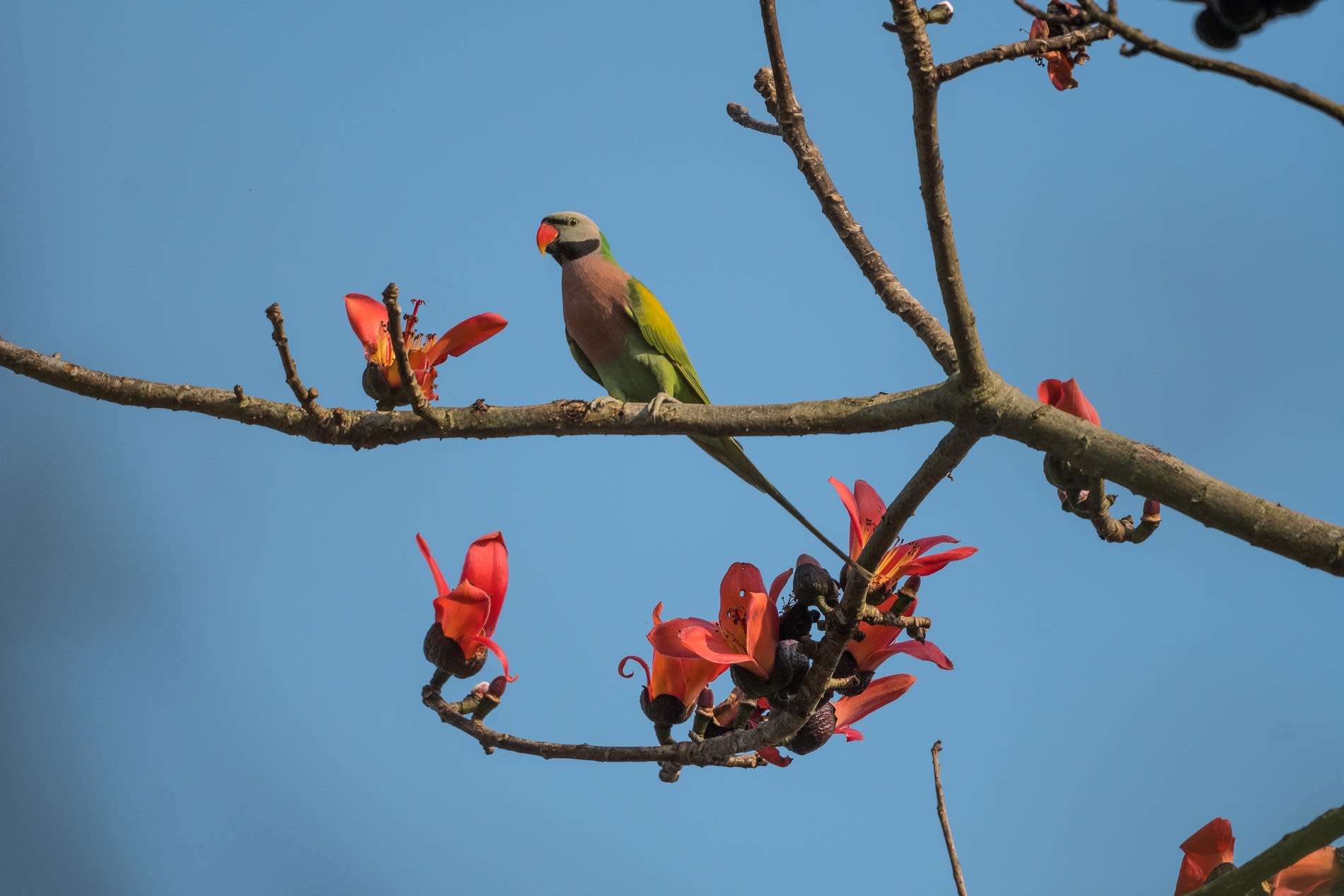
However, flowers with abundant nectar are vulnerable to nectar theft. These evolutionary trade-offs are what lend such diversity to plant-animal relationships. Plants being pollinated by generalist species — those organisms with a broad, unfussy choice of eating or living habits, like mynahs — tend to be larger, with many more flowers on each plant.
A red-breasted parakeet (Psittacula alexandri) perches on a red silk cotton tree. While nectar-filled flowers attract many birds, not all aid in pollination. Certain birds “cheat” the system. Parakeets, for example, will often devour the young flowers before they mature entirely. A study in New Delhi observed that short-billed birds like bulbuls and white-eyes “steal” palash (Butea monosperma) flower nectar. These winged thieves pierce the sides of the flower to access their sweet plunder, bypassing the pollen-bearing parts entirely. Only sunbirds were effective pollinators for palash flowers, as they foraged for the nectar from the open keel, where the petals join together, allowing pollen to gather on their feet as they perched.
Plant adaptation to encourage pollination is called “pollination syndrome”. This includes features like long, colourful flowers with plenty of nectar. These flowers generally have stamens arranged in a way to easily brush against any bird feeding on the nectar, as is visible in these (1) red silk cotton (Bombax ceiba) flowers and a stigma positioned to ensure contact with the pollen-dusted pollinator. Birds do not have a well-developed sense of smell, so bird-pollinated flowers have bright colours (particularly red) and generally little scent. Palash, silk cotton (1,2, 4) and powder puff plants (Calliandra inaequilatera) (3) all have bright red or pink flowers.
Birds are attracted to red flowers, as they are sensitive to that wavelength of light, having red photoreceptors. In early March, bright red and orange splashes greet you in many parts of India with the flowering of red silk cotton and palash trees. Sit under them and watch for a cacophony of birds — blue-throated barbets (1), Indian roller (Coracias benghalensis) (2), golden-fronted leafbird (Chloropsis aurifrons) (3), and hair-crested drongos (4) take turns sipping the nectar.
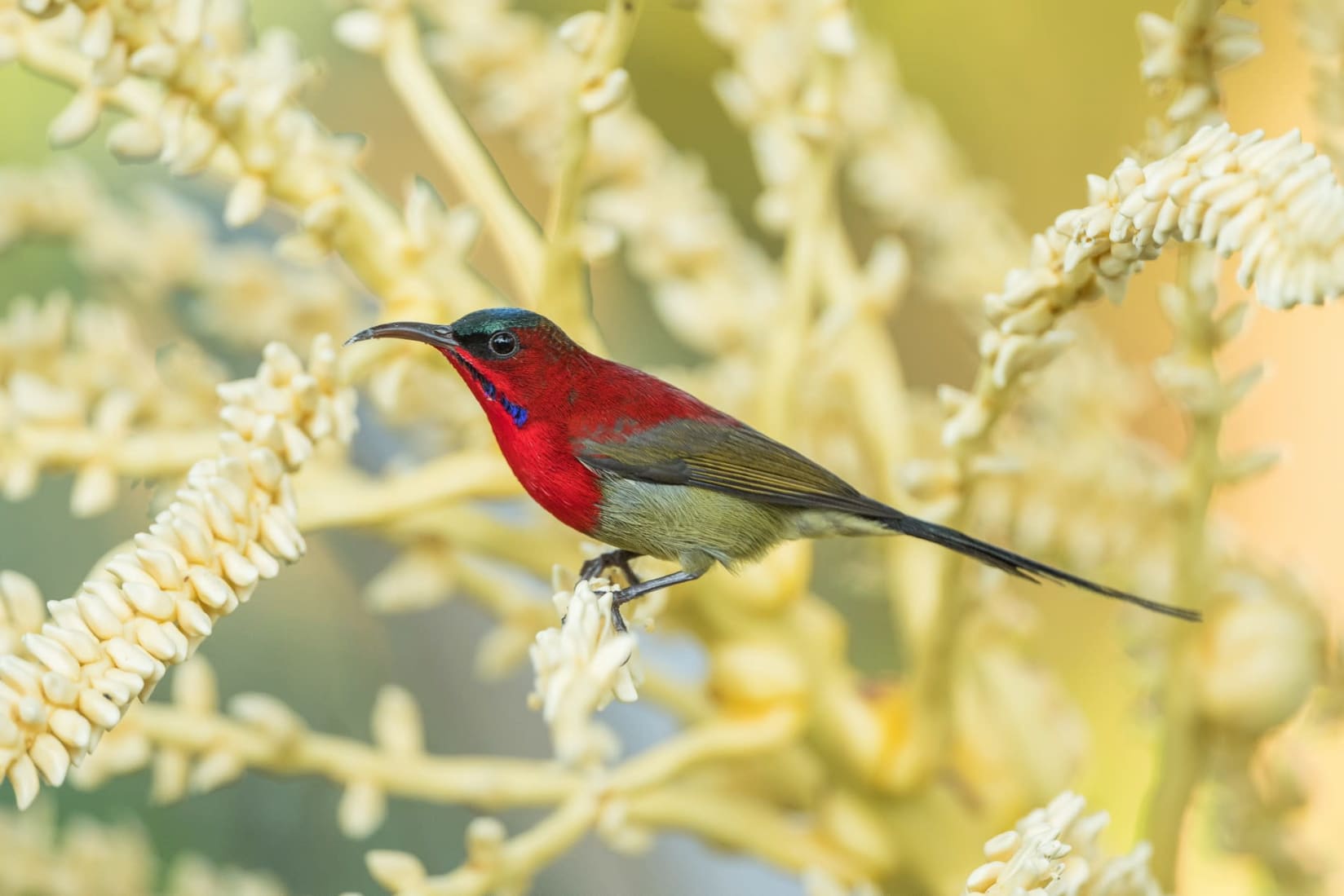
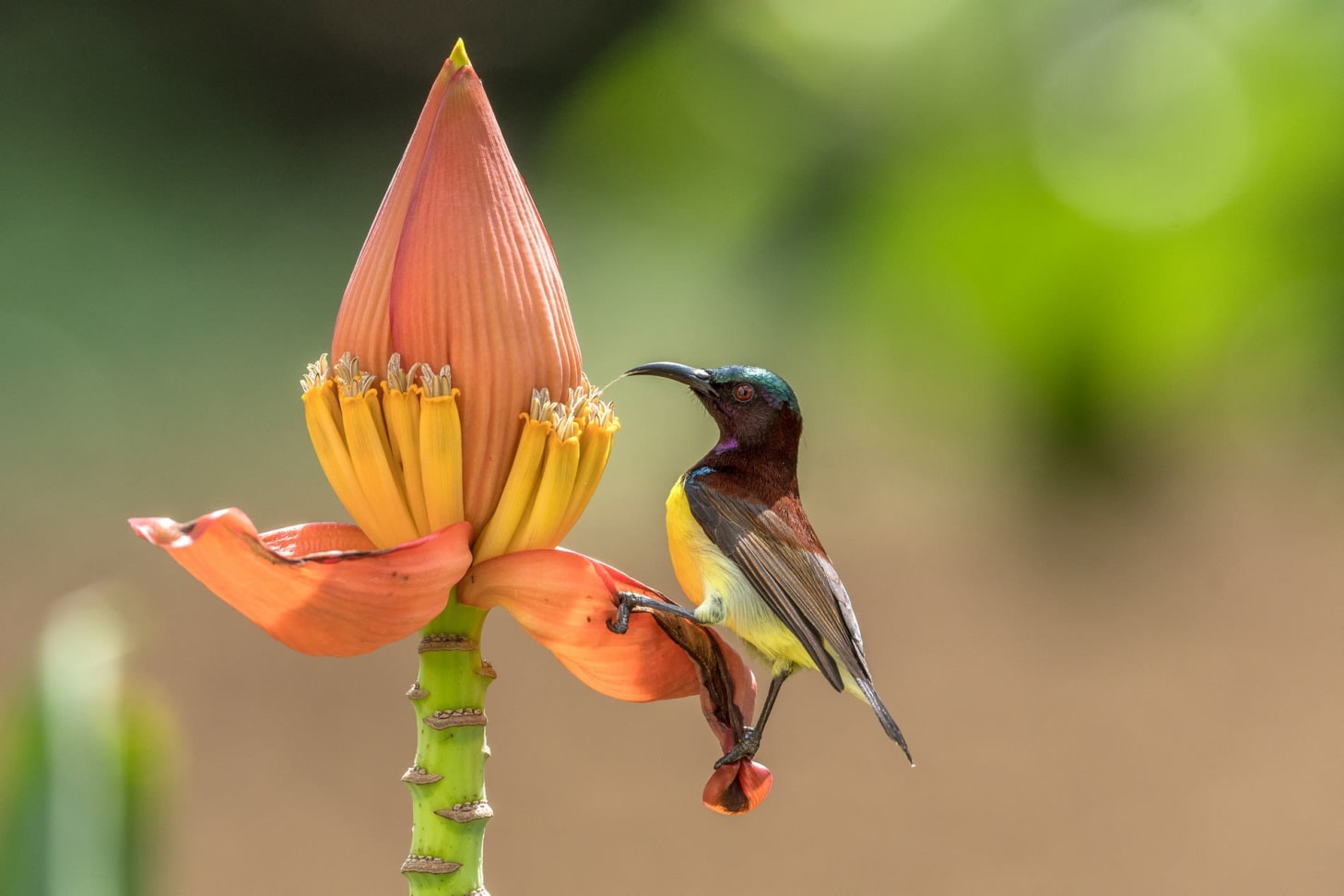
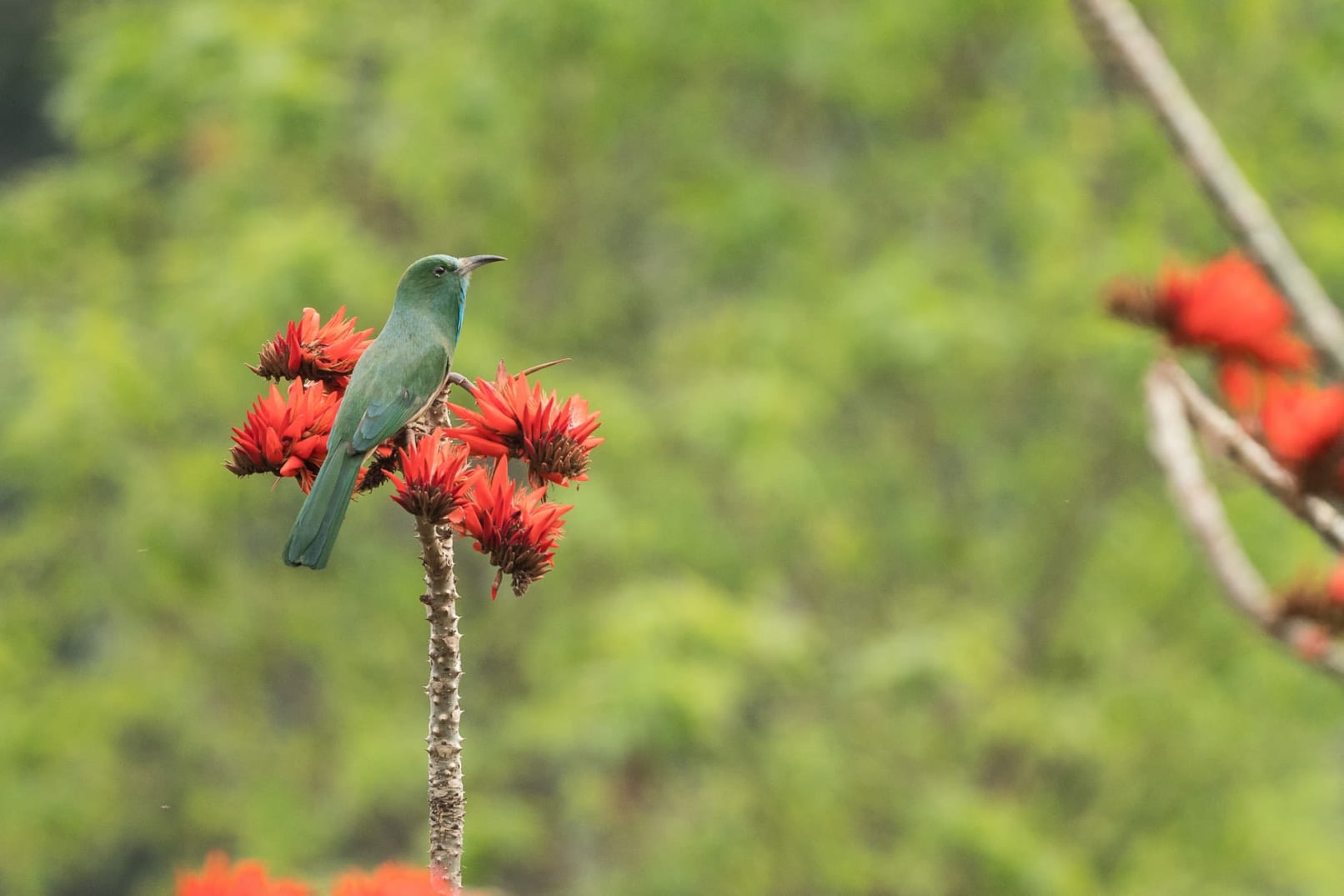
The plant genus Erythrina has over 100 species scattered across the tropics, all of which are pollinated by sunbirds, hummingbirds, or other passerines. Most of these species have bright red or orange flowers. The Indian coral tree (Erythrina variegata) has scimitar-like tubular red flowers, which are gathered in bunches. Many bird species, from barbets to sunbirds, leafbirds to mynahs and this blue-bearded bee-eater (Nyctyornis athertoni) are drawn to the copious nectar produced by the flowers of the coral tree. Having many pollinating birds is important for any ecosystem; this is a phenomenon called “functional redundancy”, where multiple species play a similar role in the environment. In this case, ensuring that flowers continue to get pollinated even if one or more pollinating animals are absent. This increases the resilience of an ecosystem to shocks and threats.
With climate change, the phenology of plants is changing – when they flower and fruit, when new leaves grow, etc. What happens when a flower opens but its pollinators are yet to arrive? With milder winters, many trees flower earlier and earlier in the year, creating a mismatch with pollinators, particularly those which migrate, such as Himalayan sunbirds that move to lower elevations in the winter.
Habitat loss and invasive species also threaten both plants and their bird pollinators. Hopefully, the functional redundancy inherent in our biodiverse tropical ecosystems will ensure that plants and animals will adapt to changes and preserve this aeons-old relationship.



